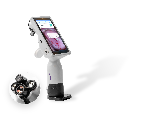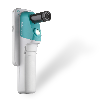Presented at the 2020 ASCCP Annual Scientific Sessions
M Cremer (1) (,4), AT Goldstein (2), R Nissim (3), Y Misrahi (3), S Bedell (2), S Wu (5), J Sun (5), X Qu (4), J Felix (6) , D Levitz (3)
(1) Ob/Gyn and Women’s Health Institute, Cleveland Clinic, Cleveland, OH, USA (2) Center for Vulvovaginal Diseases, Washington, DC, USA (3) MobileODT, Tel Aviv, Israel (4) Basic Health International, New York, NY, USA, and Taiyuan, China, and Xinxiang China (5) Department of ObGyn, Shanxi Bethune Hospital, Shanxi, China (6) Department of Pathology, Medical College of Wisconsin, Milwaukee, WI, USA
Objective: to provide descriptive statistics of AVE’s performance on 3 cervical cancer projects in China: 1 NIH clinical trial and 2 screening camps.
Methods: Mobile colposcopy images were collected from 3 cervical cancer projects in China. These 3 data sets were analyzed retrospectively using 2 classifiers. Endpoint: CIN 2+ histopathology. Each project received local + US IRB approval. AVE results were compared against histopathology
Results: The sensitivity and specificity of 3 AVE thresholds were calculated:
- Biopsy-trained, Threshold 1: high sensitivity mode
- Biopsy-trained, Threshold 2: high specificity mode
- Human-annotated: preferred by clinicians in usability testing
Conclusions: AI has great potential as a new cervical cancer screening method. Its accuracy is at least as good as LBC and HPV genotyping from Kaiser Permanente data. Data is needed from both well designed clinical trials and real world clinical data to better ascertain the potential of AVE, both in a screening and triage setting.







